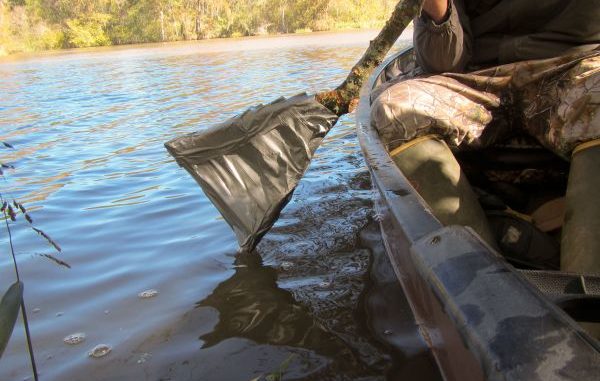
You carry a lot of equipment in the woods, but is duct tape in your bag? Maybe it should be. Here are some uses for the versatile material.
There are a few items I’ll never leave home without when heading into the woods to deer hunt. Of course, if it’s during the rut, I’ll tote along a grunt call, doe estrous and even rattling horns, in addition to items that are useful all season.
I have to admit that when it comes to carrying the extra weight of survival items, I don’t pack much that could be considered useful aside from a knife and cordage.
Luckily, I’ve never been thrust into a situation that necessitated survival gear.
But, according to self-described survivalist Michael Henderson, you don’t need to make a trip to the outdoor store and spend hordes of money on flashy gear.
Instead, head to the hardware store and pick up a roll of duct tape, which will provide hundreds of uses in a survival situation.
“Duct tape is probably the most under-used and most useful of all survival kit components,” said Henderson, a resident of Pascagoula, Miss. “I have carried a small roll in all of my kits dating back to my time in the (Marine) Corps. Almost every item in a survival kit can be multi-purposed.
“You can probably divide survival into its basic parts and name hundreds of ways duct tape can be used for each. You would only be limited by your imagination.”
And, while the sturdy gray tape certainly is a valuable survival tool, it’s also useful in several everyday situations when you’re out in the woods and need a quick fix. This list certainly doesn’t cover all the practical uses for duct tape for an outdoorsman, but here are a few I tried myself — and a few other suggestions are good to keep in mind during hunting season.
Fire
Duct tape is flammable and can be used to ignite kindling if natural tinder is too damp. Cut a small, quarter-sized strip and set it ablaze — it can burn for more than 10 seconds.
A larger strip will burn plenty long enough to get a fire going if kindling is stubborn.
Patch leaks
The simplest application for duct tape is patching leaks, which it does well.
Due to its construction, this tape is meant to be water resistant and create a tight seal, so it works to stop leaks on anything from hydration bladders to water bottles.
I punched a hole in a plastic bottle, wrapped it a few times in Duct tape and filled it with water.
No so much as a single drop came out.
Gear repair
Impromptu gear repairs while hunting come easy with a roll of duct tape handy.
The tape can act as a temporary patch for tents, sleeping bags, rubber boots and even canoes. I rolled a strip of tape several times around a leaky pair of knee-high rubber boots, and the patch job stopped any water from finding its way inside.
After continued submersion, the tape will start to unravel, though. It’s best to use the tape as fixes until you get back to camp or home and can make the patch more permanent or get new gear.
First Aid
Surprisingly, duct tape is also handy in many first-aid situations. It’ll wrap around a finger to stop bleeding, but be aware that direct contact with the skin might cause irritation if left for long periods of time.
It’s best to put cloth between an open wound and duct tape, and only use the tape as a bandage in emergency situations.
Duct tape can also be used with sticks as a leg splint or to create an arm sling, keeping the limb supported and immobile until you can seek proper medical attention.
Hunting
There are also practical hunting uses for duct tape, which are mainly employed during a survival scenario.
Need a spear? Simply find a long, sturdy branch and attach a knife to the end using duct tape.
Other uses include making arrow fletching and building a sheath for a knife.
Improvisation
What I find to be the biggest advantage of using duct tape in the field is its versatility. With just a single roll, you have the ability to craft a number of useful items.
My favorite item I constructed was a makeshift paddle. I found a sturdy branch with forked end and wrapped Duct tape around the end while ensuring it was sealed so it would remain waterproof.
In only a few minutes, I had a capable paddle.
Now, you won’t break any speed records with a duct tape paddle, but it’ll work just fine if you lose your store-bought model.
Other practical uses include using the tape to hold together a shelter, taping trees to mark a trail, constructing a hat or fixing a broken fishing pole.
Cordage
Duct tape also can be cut into small strips and spun or taped together back to back to create cordage.
Strips of cordage are useful in numerous scenarios, such as creating a clothes line to dry clothes, improvised shoe laces or even a belt.
I taped two pieces (sticky side together) to create a gun strap. I stuck one end to the barrel and the other to the stock. After adding a few layers, I was quite surprised at the sturdiness of the improvised sling.
It worked just as well as any leather ones I’ve used.







